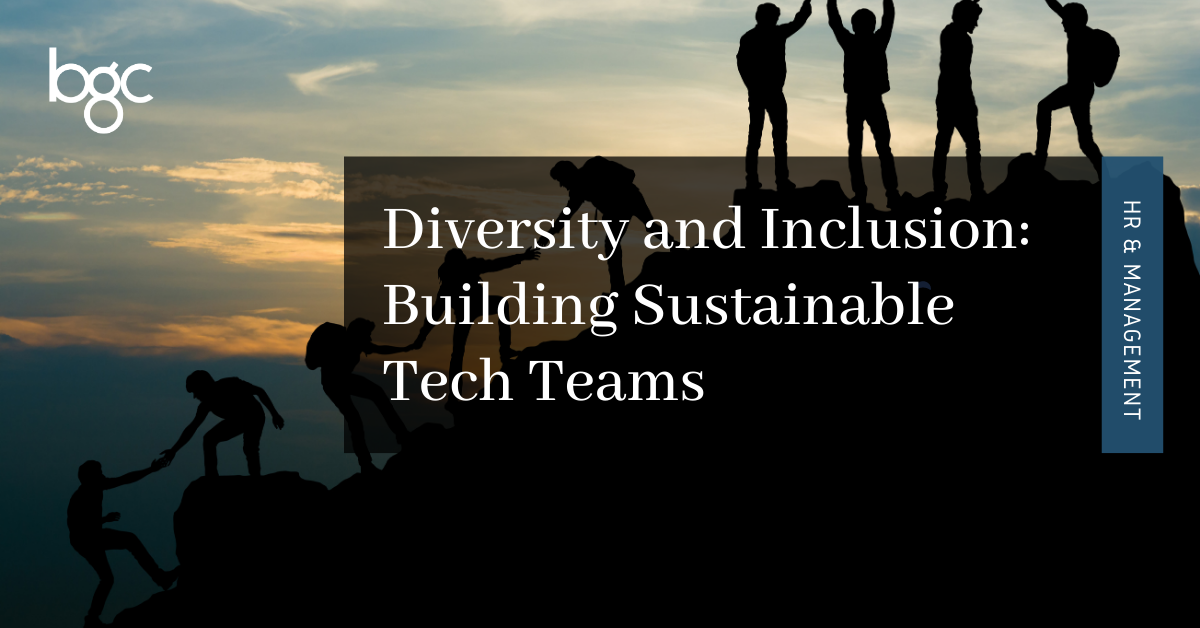There’s a movement called Diversity and Inclusion in tech originating from the lack of participation of people from different backgrounds and cultural contexts, and minorities. While it has been around for almost a decade now, many still find hiring with diversity in mind merely a checklist item. Also, with trending topics often sharing about how the most underrepresented individuals in tech are women, many people assume that diversity in tech is mostly about hiring more women. Well, it’s not.
Diversity in tech is more than that. It is about growth and productivity in any organisation.
How so?
The US Bureau of Labor and Statistics recommends that tech companies will not be able to survive for longer without opening their doors to diversity. There exists the “more jobs, less qualified people” narrative, and one of the few things that can still keep businesses growing and productive through diversifying. Not just that, adding more diversity to any tech team will also enable different perspectives to solve any problem, and it leads to more innovation.
Take a product development cycle for example, when the development/design team is more diverse, not only will the product be better developed, you will also be assured that the product is built for more people’s needs. Additionally, diversity also allows you to continually improve and adapt your work culture by allowing voices of everyone to be heard in teams. But that’s what diversity will do.
The bigger question here is this..
How can companies ensure diverse and inclusive teams today?
Here’s a list of a few things that can be done:
1. Train your existing teams for cultural intelligence (CQ)
From Human Resources to operations, train every single team member on cultural and gender sensitivity, and on dealing with unconscious bias. Discrimination at every stage, be it hiring, administrative engagements or working in teams hampers the overall diversity and inclusion drive. These training programmes should not be once a year occurrence, rather mandatorily be carried out throughout. Have special training programmes only for your recruitment team to equip them to not make judgments about people because of unconscious bias.
2. Change the way you hire
While some organisations need to do this a lot, others may not need to invest in this so heavily. But what this essentially means is the overhaul of your hiring process, starting from candidate expectations, job descriptions, to interview and scrutiny processes itself. Give up those heavy requirements for educational qualifications, instead shift to skill-based expectations.
Some organisations prefer to undertake blind assessments these days by way of which they do not let attributes such as gender, race, or sexual orientation, be revealed to the recruitment team at all, by way of design. Similar models may be used by companies to create space for diversity and inclusion.
3. Build a culture of inclusivity
Getting to diversity is one thing, maintaining, promoting and furthering it is by way of inclusion. In order to do that, the leadership must be actively engaged in communicating both internally and externally, the value that they find in their inclusive practices. This should mean better disciplinary action policies and healthier work culture and ethics that drive people to respect the different cultural, ethnic, gender contexts etc.
Many organisations also have diversity teams or a person in charge of diversity whose job it is to ensure policies and operations that keep diversity and inclusion in mind. You may not have the bandwidth to create such a change but ensuring that someone is in charge of ensuring diversity is a must, regardless, with the leadership’s commitment and buy-in.
4. Revisit equal pay
In order to attract more diverse applications, you also need to position yourself as a company that pays equally for equal work. This gap is real and disincentivizes a lot of talented individuals. Women in STEM, for example, earn $16,000 less on an average as compared to their male counterparts, along with slow promotions, leading them to leave tech jobs 2 times faster than men.
5. Openly communicate policies internally and externally
Disclose yearly figures and statistics of hiring activity and current employees along with diversity in teams. You might learn something new or develop an innovative policy on how to stay inclusive, share those with the wider community. Not only will it help your company and its reputation but also the larger diversity and inclusion movement.
Growing diversity and inclusiveness puts your organisation ahead
In the end, you need to be open to testing out what works in your organisation as well because not always will your efforts yield productivity directly. In the long run, however, diversity and inclusion will be the way forward, so you need to start at some point. Similarly, as mentioned above, starting at home, is the first step to take.
And should you need support with building culturally diverse teams to expand your world of perspectives, let our tech specialist recruiters understand how we can help you with your hiring needs!
Recommended Reads
4 Reasons Why Tech and IT Employees in Singapore Leave Their Jobs
How to Interview Tech and Cyber Security Candidates in Singapore
BGC HR Back to Basics: What Do These Programming Languages Mean?
How Emerging Technology Will Transform Old HR Systems
